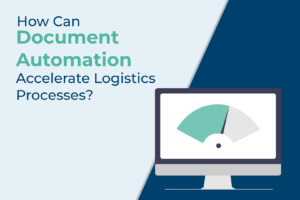Under the Kingdom of Saudi Arabia (KSA), the Zakat, Tax and Customs Authority (ZATCA) – previously known as the General Authority of Zakat and Tax (GAZT) – recently released detailed information about the country’s e-invoicing plan. This includes the FATOORAH project, which is scheduled to begin this year.
As defined by ZATCA, e-invoicing will be implemented in two phases and applies to all VAT taxable entities. Let’s examine what this will entail and how you can prepare.
FATOORAH implementation: The first phase
The first phase of implementation requires that e-invoices, credit, and debit notes be issued and stored in both an XML format and a human-readable PDF file. The deadline for this change is 4th December 2021.
This phase also requires taxpayers to be equipped with compliant e-invoicing solutions that adhere to the specifications and requirements put forth by ZATCA. There are certain mandatory parameters that each e-invoice must contain to be verified, as per the guidelines defined in the next stage of the mandate.
FATOORAH implementation: The second phase
This is when all entities subject to the e-invoicing mandate must integrate their e-invoicing solution with the system defined by ZATCA using an Application Programming Interface (API). This integration also needs to meet all previously announced relevant regulations, procedural rules, and requirements.
This phase goes into effect as of the 1st of January 2023.As a result of this mandate, all e-invoices must be sent to the ZATCA system for verification and approval. ZATCA will in turn approve and legally bind the invoice in accordance with government rules.
In addition to this, implementation will be carried out in phases for specific target groups, the criteria for which will be determined by the authority. These target groups will be informed at least six months in advance regarding the e-invoicing compliance deadline.
The benefits of FATOORAH
E-invoicing can bring benefits for both government and private users involved. By adapting to FATOORAH, you can:
- Create a transparent commercial trade environment.
- Enable a seamless, fast-paced digital market and remain competitive per international standards.
- Enhance your business transactions through a unified, non-biased system for invoice audits.
- Create a consumer-first digital experience.
- Improve taxation compliance with better invoice reporting.
E-invoicing guidelines scope
The mandate addresses all of the following groups:
- Taxable residents of the KSA.
- Customers or third parties who issue an invoice on behalf of a taxable resident of the KSA.
These guidelines aim to provide clarity and simplify a taxpayer’s understanding of their obligations toward the entire e-invoicing process.
Furthermore, taxable persons who are not residents of the KSA are not required to issue e-invoices or notes for supplies that are taxable by law.
Key invoice fields
There are certain technical and transactional detail fields that invoices need to comply with. If a taxable authority has an e-invoicing solution in place, it must ensure that the system validates certain information.
Here are some of the necessary rules:
- All e-invoices (including simplified e-invoices) must include a Universally Unique Identifier (UUID). A UUID is supposed to be a use-specific number generated for each invoice. The entire invoice lifecycle will be tracked using this UUID.
- The e-invoicing solution must produce a Cryptographic Stamp, for which ZATCA will produce a Cryptographic Stamp Identifier. The stamp itself ensures that the taxpayer’s solution is registered and compliant. The identifier associates the stamp with its corresponding e-invoicing solution.
- A previous Invoice Hash must be present on all invoice documents. This hash is a digital fingerprint used to validate each invoice on the correct system. The subsequent electronic invoice or note document must include this invoice hash.
- The printed invoice must include a QR code, which customers can use to quickly verify important details. For simplified invoices and their notes, this QR code needs to be generated in the first implementation phase, while for all remaining invoices it needs to be done in the second phase. You can find out more about the QR code requirements in the official ZACTA guidelines.
Technical compliance requirements
There are certain basic prerequisites that an e-invoicing solution must follow to generate and validate invoices on the ZATCA system. These solutions must be:
- Able to connect to the internet to share invoices with the authority.
- Able to connect with an API published by the relevant authority in order to share invoices.
- Tamper-proof to prevent any unauthorized modification done to invoices.
- Able to record and detect all interactions.
Taxable entities subject to obligations
To summarize the e-invoicing process under the KSA, each taxable person or entity is obligated to do the following:
- Generate all invoices and debit or credit notes in an electronic format before the given deadline (the 4th of December 2021).
- Verify all e-invoices via the ZATCA system prior to sharing them with customers after implementation.
- Comply with all relevant guidelines, timelines, technical specifications, and procedural and control rules as discussed in this article.
While this can seem overwhelming, there’s still time to prepare for the first phase. Contact us today to learn more about compliant e-invoicing automation.


